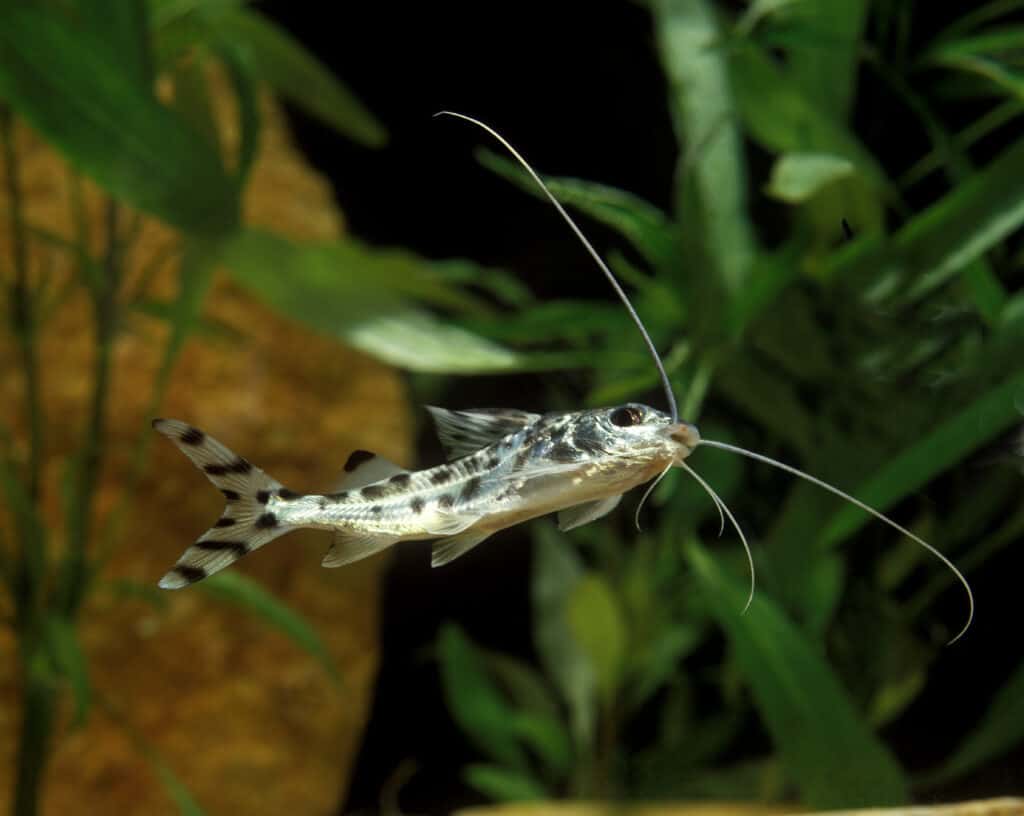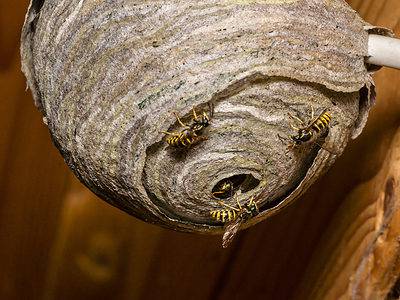Pictus Catfish
Pimelodus pictus
Pictus catfish are social fish that should be kept in groups of 4 or more
Advertisement
Pictus Catfish Scientific Classification
- Kingdom
- Animalia
- Phylum
- Chordata
- Class
- Actinopterygii
- Order
- Siluriformes
- Family
- Pimelodidae
- Genus
- Pimelodus
- Scientific Name
- Pimelodus pictus
Read our Complete Guide to Classification of Animals.
Pictus Catfish Conservation Status
Pictus Catfish Facts
- Prey
- Insects, snails, and small fish
- Name Of Young
- Fry
- Group Behavior
- School
- Fun Fact
- Pictus catfish are social fish that should be kept in groups of 4 or more
- Most Distinctive Feature
- Long barbals
- Other Name(s)
- Angel catfish
- Diet
- Omnivore
- Lifestyle
- Nocturnal
- Type
- Catfish
- Common Name
- Pictus catfish
- Origin
- Orinoco and Amazon river basin
- Number Of Species
- 1
- Location
- South America
Pictus Catfish Physical Characteristics
- Color
- Black
- Silver
- Skin Type
- Scales
- Venomous
- Yes
- Aggression
- Low
View all of the Pictus Catfish images!
Pictus Catfish Summary
The Pictus catfish is a small freshwater catfish that is native to the shallow Orinoco and Amazon river basins. These fish are also commonly kept in freshwater aquariums and are popular with the aquarium trade industry.
The Pictus catfish is a member of the Pimelodidae family. Franz Steindachner, an Austrian zoologist, discovered them inhabiting the tropical rivers in South America in 1876. They are active fish that have a sharp dorsal fin, and their most distinctive feature is long barbels that are located near their mouth.
3 Facts About Pictus Catfish
- Pictus catfish’s spiny dorsal fin produces a venomous sting warding off predators and preventing being eaten or picked on.
- They are social fish that enjoy being in groups of four or more.
- They have long barbels that can reach 2-3 inches in fully grown adults.
Pictus Catfish Classification and Scientific Name
The Pictus catfish, scientifically known as the Pimelodidae pictus belongs to the Pimelodidae family that belongs to the Pimelodus genus. They are one of the smallest species of freshwater catfish and are commonly kept for the aquarium trade industry.
Pictus Catfish Appearance

Pictus catfish have long barbels that can reach 2-3 inches in fully grown adults.
©slowmotiongli/Shutterstock.com
The Pictus catfish have an attractive appearance, with silver bodies speckled black with dots. Their dorsal fin stands straight up and is more angular than other catfish’s dorsal fins. It is sharp to the touch and helps ward off predators. They are bottom-dwelling fish that spend most of the time foraging through the substrate with long barbels or whiskers that can grow long as their body. The typical size ranges from 3 to 5 inches (7-12 cm) which is quite small for catfish. They do not grow as large in aquariums, only reaching 2 to 3 inches (5-7 cm) in captivity unless their aquarium is of adequate size, and they are fed a diet that best replicates their natural feeding.
Pictus Catfish Distribution, Population, and Habitat
Distribution and Population
Pictus catfish live in the shallow, tropical waters of the Amazon and Orinoco river basins in South America, their native habitat. Most of the wild population size is found throughout Colombia, Venezuela, Peru, and Brazil. They also are found around the world in fish farms and tropical freshwater aquariums where they are bred and raised as pets.
Habitat
The native habitat of the Pictus catfish is tropical, shallow freshwater rivers and streams that have a sandy substrate with lots of vegetation. They prefer flowing waters, both in major river channels and their tributaries.
In Aquariums
Pictus catfish need a large aquarium of at least 55 gallons to support their activity levels. Because they enjoy being in shoals, or groups, of 4 or more, it is important to provide them with a large tank to support their grouping behaviors. They require a filter and heater to keep the water clean and heated like in their natural habitat.
The water temperature should range from 75-80 degrees Fahrenheit (23-26 degrees Celsius) with a pH level of 7.0 to 7.5. These bottom-dwelling catfish will benefit from a sandy substrate and plenty of live plants and natural items, like driftwood, to replicate their natural habitat. Due to their delicate barbels and the amount of time spent on the bottom scavenging for food, horizontal tanks are favored over tall ones.
Pictus Catfish Predators and Prey
In the wild, Pictus catfish fall prey to aggressive species of fish. Their defense is a spiny dorsal fin that has a venomous sting. It feels similar to a wasp sting that can injure or stun predators, however, they rarely use this defense mechanism on other fish unless they feel very threatened. They are scavengers that eat an omnivorous diet that consists of insects such as dragonfly larvae and small fish, snails, and algae.
Pictus Catfish Reproduction and Lifespan
In the wild, Pictus catfish males encourage the females to lay eggs. The male then fertilizes and protects the eggs until they hatch into fry. They are sexually mature at 4 inches (10cm) and have a lifespan that ranges from 8 to 10 years.
It is tricky to breed them in aquariums because they need a very large tank with perfect water conditions for successful breeding. Since they rarely reach more than 3 inches in captivity, it is uncommon for them to be mature enough to breed. Many breeders recommend an aquarium for a breeding shoal of 200 gallons or more so that the fish can reach their maximum adult size to encourage breeding.
Pictus Catfish In Fishing and Cooking
Pictus catfish are not used in cooking and are rarely fished for, but they are commonly kept as aquarium pets. Some specimens that are kept in captivity may have been caught in the wild, but they are usually mass-bred to be sold in the aquarium industry.
3 Similar Animals To The Pictus Catfish
Pictus catfish are quite similar to several different types of catfish members, such as the:
- Armored catfish – A seriously invasive species that was originally from South America.
- Cory catfish – They are a popular freshwater fish in the aquarium hobby.
- Flathead catfish – The second largest North American species of catfish growing up to 61 inches.
Pictus Catfish FAQs (Frequently Asked Questions)
Where are Pictus catfish found?
Pictus catfish are native to the warm waters of the Amazon and Orinoco river basins and can be found in shallow freshwater river channels. Since the Pictus catfish is kept as a pet in aquariums, they can be found around the world.
What is the difference between a male and female Pictus catfish
Both male and female Pictus catfish look very similar, which makes it challenging to tell the two apart. However, females are described as being slightly large than males with a rounder body when they reach sexual maturity at 4 inches in size. Males may be more stream-lined with slightly more defined fins.
What size tank do Pictus catfish need?
Pictus catfish need large aquariums that have a heater and filter. The typical tank size for a Pictus catfish should range from 55 to 200 gallons for a small group of them. The more Pictus catfish you keep in one aquarium, the larger it needs to be. Pictus catfish do best in very large horizontal aquariums because they are able to reach their adult size.
Thank you for reading! Have some feedback for us? Contact the AZ Animals editorial team.
Sources
- Wikipedia, Available here: https://en.wikipedia.org/wiki/Pimelodus_pictus#:~:text=Pimelodus%20pictus%2C%20also%20known%20as%20the%20pictus%20cat,commonly%20kept%20as%20a%20pet%20in%20freshwater%20aquariums.
- Seriously Fish, Available here: https://www.seriouslyfish.com/species/pimelodus-pictus/

















